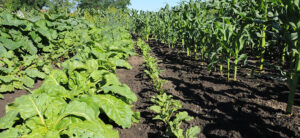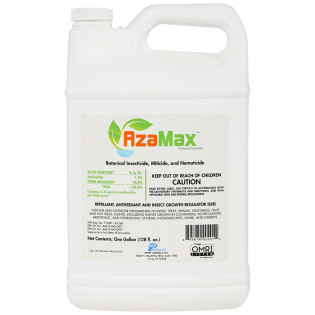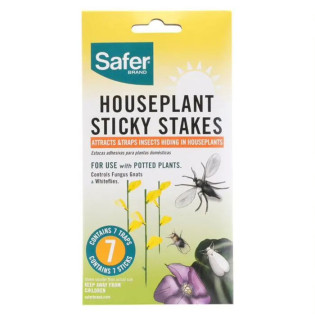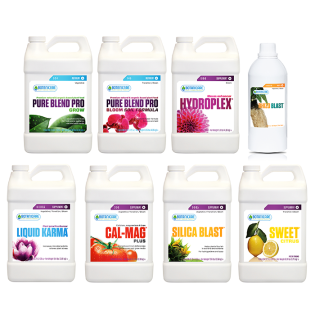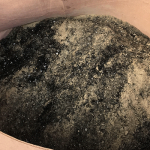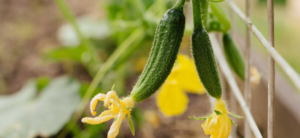
Garden companion planting - it’s like spending all day, every day, with your very best friend. This is one of the smartest things you can do to improve the health of your garden, while increasing the variety of plants you grow.
Not only can it reduce the likelihood of diseases and pests, but when done correctly, it can even help improve the nutrient content of your soil.
The end result? Happier, healthier crops that grow well no matter what you throw at them. And, a diverse selection of crops, too!
In our garden companion planting guide, we are going to help you add this technique to your IPM strategy so that you can cultivate happy, healthy, problem-free plants this year!
What Is Garden Companion Planting?
Community is important! That’s true for plants, too. Certain plants grow better together in a concept called companion planting.
Believe it or not, the relationships between plants are just as complicated and varied as are those between people.
There are some plants that grow well with each other and others that do not.
That's why you need to read our garden companion planting guide - to avoid planting the wrong crops together, and actually reap the benefits of this technique.
Benefits Of Companion Planting In The Garden

Organic pest control is the primary reason why gardeners turn to companion planting - but it’s far from the only benefit presented by this technique.
For one, companion planting offers shade regulation. You can grow larger plants to provide shade for smaller plants that don’t necessarily love the summer sun.
Another ones of the benefits of companion planting is for support. Certain “stalky” plants, like sunflowers and corn, can provide a trellis or stake for low-growing crops that like to sprawl, such as peas or cucumbers.
Some plants even help to improve overall plant health and to support healthy soil. Beans and peas help fix nitrogen in the soil, while taprooting plants like burdocks draw up nutrients from deep within the soil.
There are still more plants, like potatoes, that provide the benefit of weed suppression as their vines form a living mulch on the ground.
However, without question - the overwhelming benefits of companion planting are when it comes to pest prevention and control.
What Are The Best Garden Companion Plants For Vegetables?

Several plants can be grown around or near your vegetables to help improve their growth and boost your yields. Here are some of the most popular options.
Dill
Dill, when planted among tomatoes, can help guard against tomato hornworms.
It is also a good herb to plant to use to attract beneficial insects like spiders, ladybugs, and praying mantises - all of whom will happily feast upon a long list of common garden pests.
Marigolds
Marigolds don’t just bring a dash of charm and colorful beauty to your garden. They’re also valuable companion plants.
They can be grown with just about any kind of vegetable as they’ll help repel nematodes (pests that tend to target vegetable roots).
They’re particularly effective among tomatoes and melons.
Nasturtiums
Another kind of flower you can grow in your garden is the nasturtium.
These beautiful blooms act as trap crops rather than repellents. They lure insects in and keep them there, helping to distract them so they don’t go after your other beloved plants.
They are particularly effective when it comes to ridding the garden of aphids.
The Three Sisters
Another companion planting technique that you may have already heard of is the classic Native American “Three Sister Planting” technique.
In this method, you’ll group corn, beans, and squash (winter squash, summer squash, or even pumpkins will work nicely) all in the same area.
As the corn stalks grow taller, the beans will use them as support trellises. Beans fix nitrogen in the soil to support the corn.
The squash grows quickly, helping to shade out weeds and keep certain kinds of pests away.
Sage
Another herb to grow among your vegetables is sage.
When grown with cabbage and plants in the cabbage family (such as broccoli, cauliflower, turnips, kale, and radishes), it can help reduce the damage from cabbage moths.
Besides sage, rosemary, hyssop, and catnip can also be used to repel the cabbage moth. Mint is also effective and can also help to repel ants and mosquitoes.
Thyme
Consider planting thyme near your broccoli, cabbage, kohlrabi, kale, or cauliflower plants. It will help keep cabbage worms away.
Sweet Alyssum
Consider growing this flowering herb among your rows of Swiss chard. It will attract hoverflies, which can control the aphids that like to munch on your chard.
Tansy
Tansy is an herb that is best grown among plants like tomatoes, potatoes, peppers, peas, lettuce, corn, celery, carrots, cabbage, beans, and asparagus.
Why so many plants? It not only smells heavenly but it also discourages cutworms - a pest that’s known to feast on all the pests above.
Zinnias
If cabbage flies are feasting on your cauliflower, you may want to plant a few zinnias. They attract ladybugs in droves, who will help keep the cabbage fly population down.
Calendula
Calendula is best planted among broccoli or other brassica crops. It will help keep the aphids off the broccoli and attract ladybugs to dine on these aphids, too.
Basil
Planting basil near your tomatoes doesn’t just make for a convenient garden for making pasta sauce - it also helps repel pests.
Basil has a strong scent that may keep hornworms and other insects away from your tomatoes. Cilantro is another option you might consider around your tomatoes.
Lavender
Lavender is an herb that's frequently grown for its calming benefits. You’ll be even calmer when you realize that lavender is a great deterrent for codling moths, which wreak havoc on apple trees.
What Plants Should You Avoid Companion Planting In The Garden?

While most plants grow in harmony together, there are some that should not be planted together at all.
That’s because some plants grow too quickly, crowding out nearby plants and taking more water, nutrients, and sun than they rightly should.
There are even some plants, such as black walnut, that are allelopathic. This means that they exude chemicals that can kill and suppress the growth of plants growing nearby.
In general, you should avoid planting potatoes near tomatoes, squash, sunflowers, radishes, pumpkins or cucumbers.
Don’t plant members of the cabbage family near strawberries, and try to avoid growing mint or onions where asparagus is growing.
Some other combatant plants you should avoid in your garden include:
Dill
Although dill poses benefits to many plants in a companion planting environment, there are some plants that just don’t make good friends.
You should avoid planting dill with plants that are in the same family, such as parsley, carrots, and fennel. They attract similar pests, meaning you may have more work on your hands.
Onions
Onions (and garlic and other plants in the allium family) repel a long list of pests, leading many gardeners to assume that they can be planted just about anywhere in the garden.
However, that’s not the case. You shouldn’t grow them near peas or beans, since alliums can stunt their growth.
Black Walnut
In general, black walnuts should not be growing anywhere near your garden. There aren’t many plants that it benefits but a long list that it can harm.
It releases juglone, a chemical that can interfere with the growth of plants like corn, eggplants, and tomatoes.
Sunflowers
Avoid planting sunflowers near potatoes and beans. They won’t get the sun they need in order to thrive.
Garden Companion Planting Tips & Strategies

While companion planting is a relatively intuitive process, there are some tips and strategies you will want to follow to make sure you are taking the best advantage of these strategies.
For example, it’s important that you take the time to lay out your vegetable garden in advance. Don’t plant vegetables in large or long patches or rows.
Growing large quantities of one type of plant all in close proximity to each other is a great way to attract problematic pests and diseases. Instead, consider intermingling herbs and flowers among your vegetables.
Not only will this create a more attractive overall display, but it will also be harder for pests to set up shop on your vegetables.
Believe it or not, keeping a garden totally weed-free actually isn’t always the best thing.
There are some weeds that are actually beneficial in the garden, as they help draw nutrients up from the soil, bringing them closer to the surface where your plants can tap into them. Some examples include stinging nettle and burdock.
Of course, you should always remember to rotate your crops each season to prevent overwintering pests and diseases from targeting plants in the same family.
Garden Companion Planting Chart Layout
When many people first learn of this concept and want to implement it in their own crop, they seek out a garden companion planting chart to determine the right layout.
This makes it really easy to determine what you're going to plant, and where exactly you're going to plant it. But keep in mind, a garden companion planting chart provides just one example of what you could do.
Every garden is different, so it's very likely you'd need to adjust the chart to meet whatever layout you are already working with.
How To Follow A Garden Companion Planting Chart

Below are a few different garden companion planting chart examples - but as we just covered, these are just one way you can set up your plants.
This first chart is a really good visual example of what your garden can actually look like - with stepping stones and pictures of plants, you can create this in your own backyard.
This next chart is perhaps harder to decipher but offers far more information to you as to what you should and should not grow with what.
It explains what plants grow well together, which plants are beneficial to the garden in general, and which combinations help with bug control.
It also explains what not to plant together - which is really important!

However, this third chart is the most inclusive, complete garden companion planting chart.
It provides everything the second chart we shared does, but includes far more plants and explains which pests these combinations can deter.

Above all else. remember that these garden companion planting chart examples are just that - examples.
You need to consider which plants you want to grow, and ensure there are no antagonistic relationships in your garden.
Final Thoughts On Garden Companion Planting
When it comes to maximizing the productivity of your garden, garden companion planting is an important technique to learn.
Companion planting is a wonderful way to make the most of limited space, too, so don’t think that you can’t take advantage of this technique if you don’t have a lot of room to spare.
Buy all of your gardening supplies today from Hydrobuilder - and you’ll be well on your way to a productive, bountiful harvest.





